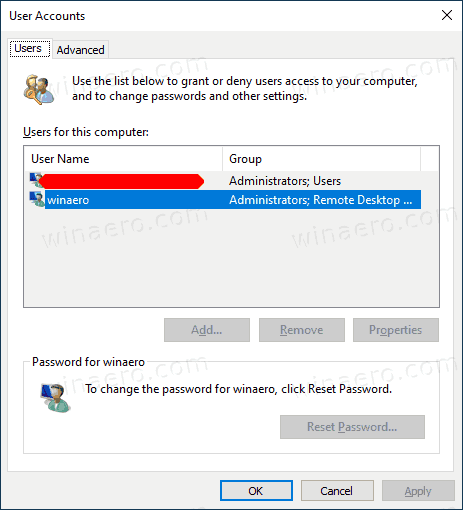Starting in Windows 10 version 2004, also known under its code name ’20H1′, Microsoft has changed the default behavior of the user autologin feature. Now, if you have any of the Windows Hello secure options enabled, you won’t be able to sign-in automatically into your user account. Here’s what you have to do.
Starting in Windows 10 build 19033, if you set PIN or other Windows Hello secure feature, Windows 10 hides the option Users must enter a user name and password to use this PC in the classic control userpasswords2. See the following screenshot:

Thanks to our reader “Birkuli”, we now know that it is the new default behavior of the OS. So, here’s how to make it sign-in automatically.
To Sign-in Automatically to User Account in Windows 10 Version 2004,
- Open Settings.
- Go to Accounts > Sign-in options.
- Turn off the Windows Hello option on the right.

- Press the Win + R keys on the keyboard. The Run dialog will appear on the screen. Enter the following command in the Run box:
netplwiz(orcontrol userpasswords2).
- Find your user account and select it in the list. You should see the check box mentioned above:
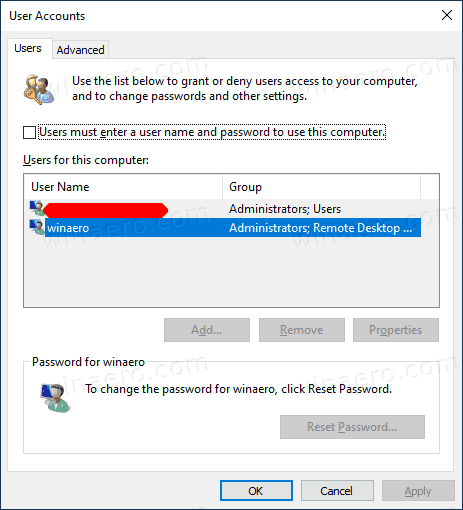
- Turn off Users must enter a user name and password to use this PC and click on the Apply button.
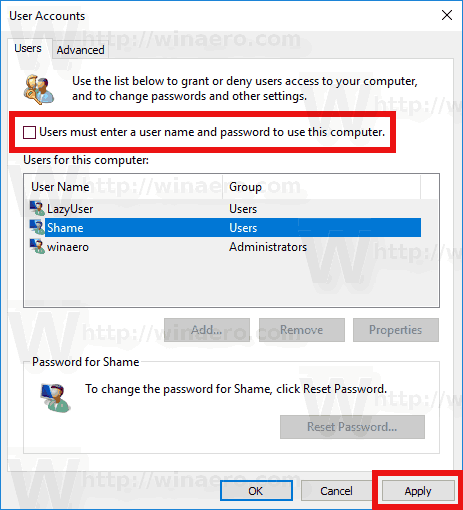
- The Automatically sign in prompt will appear.

- Type your password twice and you are done!
The procedure works best for Microsoft accounts. Check THIS out.
Some of the users of Windows 10 version 2004 who have the OS installed with a local account, report that the Windows Hello option is not visible in Settings. If you are one of them, you can apply a registry tweak to get the missing checkbox visible. Here is the procedure in details.
Sign-in Automatically to a Local Account in Windows 10 Version 2004
- Close the User Accounts dialog (
netplwiz) if you have it open. - Open the Registry Editor app.
- Go to the following Registry key.
HKEY_LOCAL_MACHINESOFTWAREMicrosoftWindows NTCurrentVersionPasswordLessDevice. See how to go to a Registry key with one click. - On the right, modify or create a new 32-Bit DWORD value
DevicePasswordLessBuildVersion. Note: Even if you are running 64-bit Windows you must still create a 32-bit DWORD value. - Change its value to
0. Normally, it is set to2by default, but this may vary from build to build. Set it to0anyway.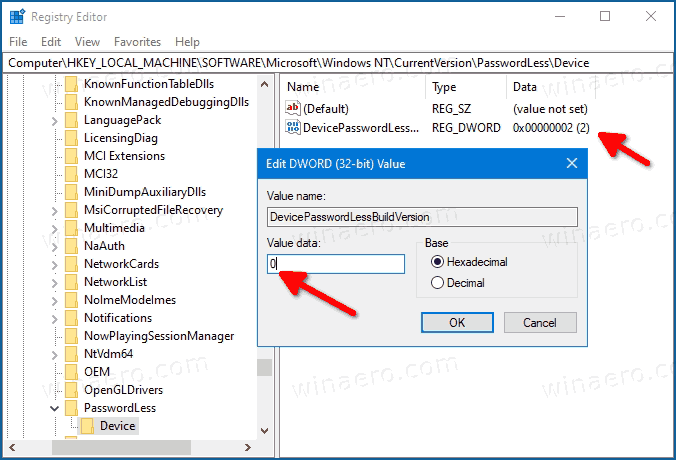
- Now, run
netplwizagain. The checkbox will be there!
To undo the change, set the DevicePasswordLessBuildVersion value back to its defaults, e.g. set it to 2.
To automate this procedure and save your time, you can Winaero Tweaker. This tweak is included in the app starting in version 0.17.1.
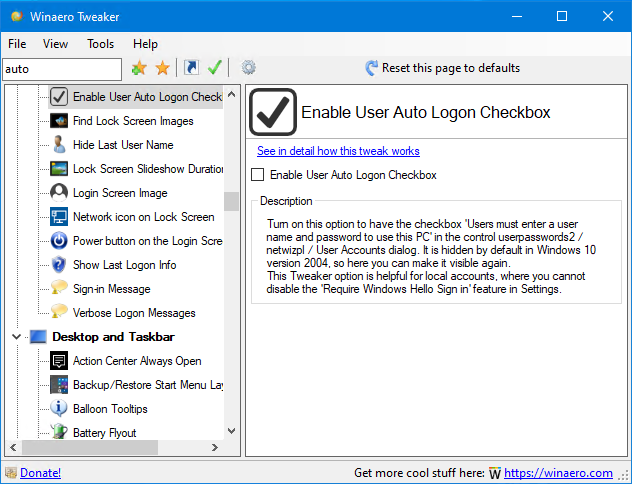
Restore Defaults
To restore defaults, run netplwiz again and turn on the ‘Users must enter a user name and password to use this PC’ checkbox. The next time you log on, you will be asked for the password again.
Finally, you can use an alternative legacy method. However, I do not recommend you to use it. I’ll explain why. It was available in previous versions of Windows NT and is not secure today. It requires storing the unencrypted password in the Registry which can be read by third party software and other users! Do not use this method unless you know what you are doing.
Sign-in Automatically to a User Account with a Legacy Registry Tweak
- Open the Registry Editor app.
- Go to the following Registry key.
HKEY_LOCAL_MACHINESOFTWAREMicrosoftWindows NTCurrentVersionWinlogon. See how to go to a Registry key with one click. - On the right, modify or create a new string (REG_SZ) value “AutoAdminLogon“. Set it to 1.

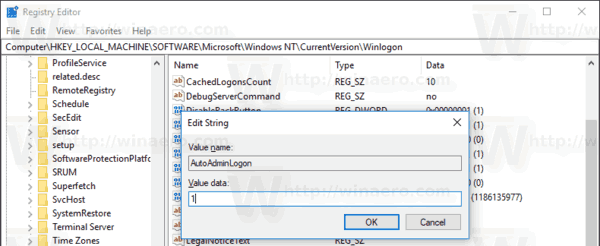
- Create or modify a new string value “DefaultUserName” and type the user name to sign-in automatically with.
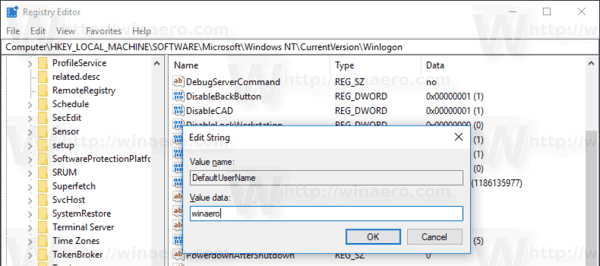
- Create here a new string value “DefaultPassword“. Type the password of the user account from the previous step.


To disable the automatic login enabled with this method, delete the DefaultPassword value and set AutoAdminLogon to 0.
